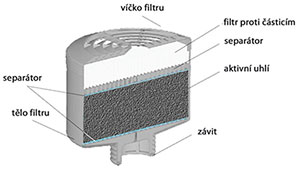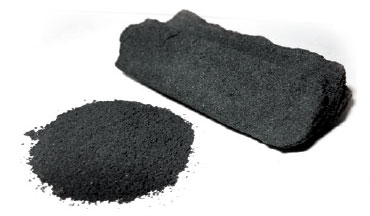
CLEANAIR A2B2 D R GAS FILTER
The best materials and precise Czech production...

Technical Specifications:
- Connection: thread RD40x1/7"
- Colour marking: brown, grey
- Certification: EN 14387, EN 12941, EN 12942
- diameter / height: 110 mm / 95 mm
- Weight: 425 g
- Art.No.: 50 01 67
The A2B2 filter protects against:
organic gases and vapours boiling above 65 °C, inorganic gases and vapours
e.g.: toluene, benzene, xylene, styrene, cyclohexane, trichloroethylene, carbon tetrachloride
- Organic solvents and thinners
e.g.: gasoline, kerosene, diesel, mineral turpentine, ethylene glycol, methyl isobutyl ketone, isobutanol, etc
- inorganic gases and vapours
e.g.: fluorine, chlorine, hydrogen sulphide, hydrogen cyanide, hydrogen bromide, hydrogen chloride or hydrogen peroxide.
- other captured substances are available in the detailed documentation
Filter lifetime
The lifetime of filters depends mainly on the concentration of pollutants in the workplace, humidity and air flow, i.e. the physical demands of working with the mask or the setting of the filter ventilation unit. Particulate filters Filters become clogged with particles and air moisture. If the breathing resistance increases during breathing, the filter should be changed immediately.
Restrictions on use
- When used against radioactive substances, bacteria and viruses, only single use is recommended!
- The filter cannot be used in environments with oxygen deficiency (<17%) or accidents (unknown pollutant concentration).
CleanAIR® filters

The body of the CleanAIR ® combined canister filter is made of highly durable plastic and the filter medium inside consists of two different parts: the activated carbon removes gaseous chemicals and vapours from the polluted air the P3 class filter medium removes solid and liquid particles from the contaminated air

The comprehensive CleanAIR® canister filter product range offers users a wide choice of filters for most industrial applications, pharmaceutical industry, laboratories and agriculture.
Gas Filtration - ACTIVE COAL
Carbon is activated by breaking down the structure of the carbon with hot steam or chemicals. This creates many tiny channels - micropores in the carbon structure. These pores are rough on the inside, allowing pollutant molecules to enter and bond with the surface. Depending on the degree of activation, the activated carbon has an internal active surface ranging from 750 m2/g to 1,600 m2/g.
 Activated carbon can be in its basic raw form (for type A filters) or impregnated with various chemicals that give it, for example, oxidizing properties, acidic or basic properties. Pure activated carbon removes many aromatic substances from the air, including organic solvents and poisons - simple adsorption. However, some common gaseous chemicals (such as cyanide or ammonia) adsorb poorly or not at all. Therefore, in order to eliminate these poisons from the air, it is necessary to impregnate the activated carbon. For this purpose, the entire inner surface is coated with active substances (reactants) for these poisons, called chemisorption.
Activated carbon can be in its basic raw form (for type A filters) or impregnated with various chemicals that give it, for example, oxidizing properties, acidic or basic properties. Pure activated carbon removes many aromatic substances from the air, including organic solvents and poisons - simple adsorption. However, some common gaseous chemicals (such as cyanide or ammonia) adsorb poorly or not at all. Therefore, in order to eliminate these poisons from the air, it is necessary to impregnate the activated carbon. For this purpose, the entire inner surface is coated with active substances (reactants) for these poisons, called chemisorption.
Another group of chemicals needs to be removed using catalysts (e.g. organophosphines). In this case, the
the surface of the activated carbon is covered with these catalysts. The catalyst promotes the chemical reaction while making it
he stands alone unchanged. His only job is to facilitate the response.
The filters are supplied with standard connection thread RD40×1/7" according to EN 148-1 or OZ 40x4.